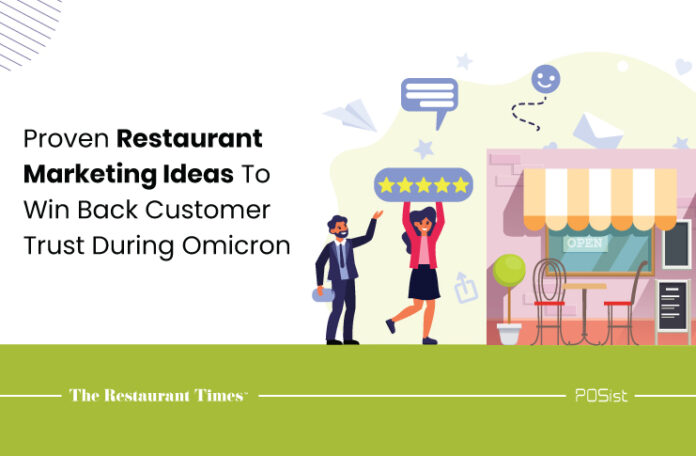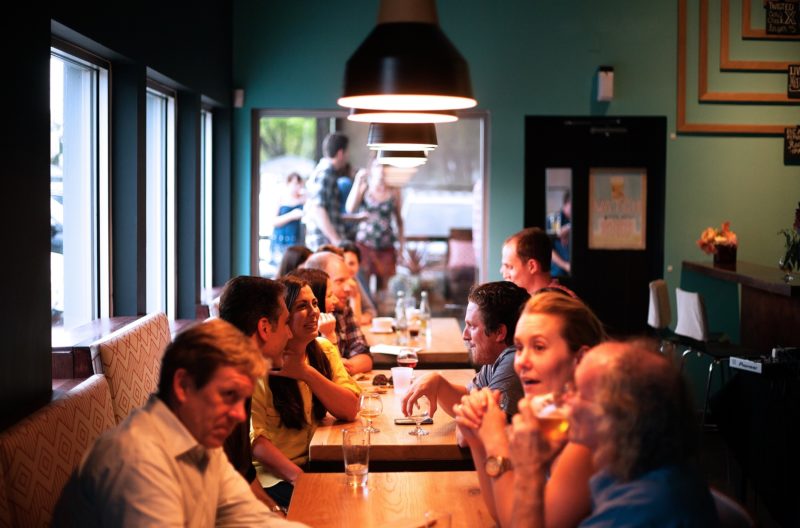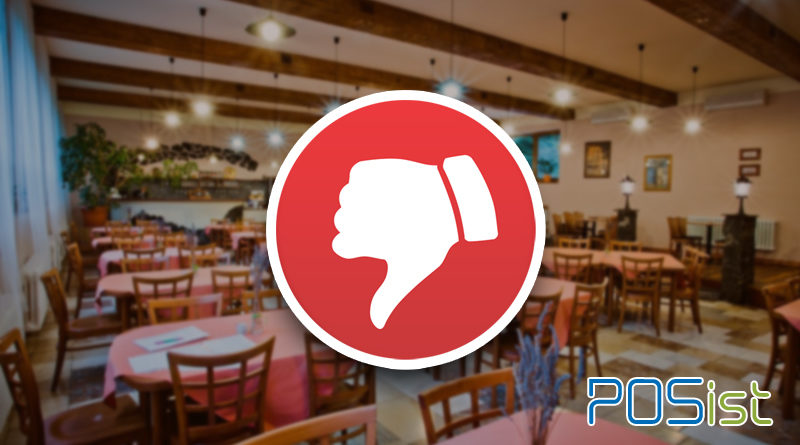Businesses, especially restaurants, have been forced to adapt or adjust their operating models as a result of the ongoing global pandemic. Things have gradually started to shift over a year after the outbreak began. However, what worked in the past may no longer work in the post-Covid-19 era. In recent years, restaurant marketing strategies have gotten much more sophisticated.
Those in charge of restaurant promotions and new business generation face both difficult and intriguing difficulties today. Consumers now have a bewildering assortment of choices, and eateries must compete for client attention in strategic ways, regardless of their location.
Restaurant Marketing Strategies That Attract Customers In Omicron
Restaurant marketing in today’s highly competitive industry necessitates precise, dependable, and thorough consumer data. You can use the information you’ve gathered about your actual customers in both online and offline marketing. Here is how you can win customer trust in the wake of Omicron.
1. Search Engine Optimization
In the present scenario, firms must do their best to rank well on Google’s first page, regardless of industry. It’s a two-edged sword, to be sure. It not only drives more visitors to your site but also establishes your authority. However, in a crowded sector like the restaurant industry, getting to the first page is a difficult task. To give you a sense of what SEO for restaurants entails, it primarily entails optimizing your website and content for local searches. It includes creating high-quality, keyword-optimized content, utilizing Google Places and Local Google Plus, interacting with clients on social media, and obtaining listings in important business directories. The most popular “around me” search query is “restaurants near me.” As a result, optimizing your website for “near me” searches has the greatest potential for growing your restaurant business of any marketing tactic.
2. Marketing With Influencers
While planning and exploring ideas to improve your restaurant’s marketing strategy, don’t forget to include social media. At least 87 percent of internet users are impacted by reviews and comments, according to Bright Local. Whether you convey your message via Twitter, Facebook, or Linkedin, engagement is a metric you should keep an eye on. Consider restaurant online marketing to be a long-term investment. An Instagram, Linkedin, or Twitter account can be created by anyone, whether they are an individual or a business. The key lies in how well they manage their social media accounts.
Customers trust your brand to meet their demands when they interact with you on social media. Approximately 92 percent of respondents believe influencer marketing is an effective kind of marketing, according to the 2019 Influencer Marketing Benchmark Report. Selecting an influencer for your company is similar to selecting a marketing partner. As a result, you must ensure that you have common interests and ambitions. Restaurants benefit greatly from micro and local influencers because they operate in a specific area. Look for food bloggers with a significant following on social media platforms like Instagram, where people can see and interact with beautiful photographs of your menu. These food bloggers might have a loyal following of anywhere between 5,000 and 25,000 people who believe what they say.

3. Customer Loyalty
One of the most important aspects of restaurant marketing is client loyalty. Getting consumers to return again and again should always be a priority. Loyal clients require the least amount of promotion to visit again, and they are also more likely to tell their friends about your business. They’re wonderful for word-of-mouth, for example. Simply having a fantastic dining experience – great cuisine, nice interior, consumer impression of value, etc. – can lead to loyalty.
However, with loyalty programs and reward schemes for returning consumers, you may actively foster loyalty. You can manage everything yourself or partner with a loyalty-focused app provider.
Free additions to the dining experience, such as free champagne or dessert, can be a focus for upscale eateries. More casual eateries may wish to just give regular customers a discount. When done effectively, restaurant loyalty programs can increase repeat sales. Because many customers are focused on gaining points and enjoying free meals, this is the case.
4. Virtual Reality Is The New Move
Virtual reality is a computer-generated environment that allows users to see and interact with situations and objects that do not exist in the real world. Restaurants are utilizing this cutting-edge technology to improve the client experience by allowing them to browse the menu and recipes as their cuisine is being made. Restaurants are a treasure trove of culinary delights, and virtual reality enhances their experience by allowing customers to explore more possibilities. In 2018, Domino’s New Pizza Chef, for example, employed augmented reality to provide customers with a real-time experience of creating a pizza combination via a mobile app.
5. Live Streaming The Kitchen
Empathizing with customers and reassuring them by sharing information on your own sanitation and hygiene practices is important.
Live streaming kitchen operations is one way that many restaurants have adopted to generate confidence among their customers. Restaurants also hold themselves accountable for their operations when they put their kitchen on display. Being live in front of the audience shows customers in real-time that the food is being prepared in the kitchen with the highest level of sanitation and hygiene.
6. Sanitized Packaging
Packaging is one of the important elements of marketing that most restaurateurs overlook. In the times of COVID, it has become all the more vital for operators to ensure that their food packaging is safe and sanitized and provides customers with the facility to sanitize their hands and consume their food anytime and anywhere. Besides, the packaging must be compact and spill-free. All of it ensures that the restaurant is not oblivious to their customer’s safety concerns and is taking all possible measures to ensure their well-being.
The pandemic has caused the restaurant business to make some significant changes in terms of how they operate. Challenges, as they say, drive invention. Many of the above-mentioned restaurant marketing strategies will become indispensable in the post-pandemic scenario and profoundly alter the way restaurants operate in the future. Several restaurant marketing strategies might help you increase revenue and attract new customers. Investigate which marketing methods will perform best for you in the short and long run once you’ve adjusted your underlying principles and built your client profile.

















